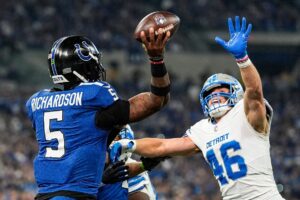NFL Hall of Fame Snubs 2025: 5 Legends Still Waiting for Canton

Every year, fans and analysts debate which players deserve a bronze bust in Canton. While some names feel like locks, others with championship rings, historic seasons, and game-changing legacies remain on the outside looking in. Here are five all-time greats whose resumes speak for themselves – and whose Hall of Fame calls are long overdue.
5. L.C. Greenwood – The Steel Curtain’s Unsung Hero
When people think of the Pittsburgh Steelers’ dynasty of the 1970s, names like “Mean” Joe Greene and Jack Lambert often take center stage. But defensive end L.C. Greenwood was every bit as crucial to the “Steel Curtain.”
A six-time Pro Bowler and two-time All-Pro, Greenwood was a constant nightmare for opposing quarterbacks. He had his finest moment on the biggest stage, sacking Roger Staubach four times in Super Bowl X to help secure a Steelers victory. The 6-foot-6 pass rusher also made a habit of knocking down passes, swatting three in the Steelers’ Super Bowl IX win over Minnesota.
Despite his dominance and four Super Bowl rings, Greenwood remains one of the most glaring omissions from Canton.
4. Lester Hayes – The Judge Who Locked Down the ‘80s
Few cornerbacks defined an era like Lester Hayes, the Raiders’ “Judge” of the secondary. Known for his physical style and trademark stickum, Hayes was nearly impossible to throw against in his prime.
In 1980, Hayes delivered one of the greatest defensive seasons ever. He won Defensive Player of the Year after leading the league with 13 interceptions, then carried that momentum into the postseason to help the Raiders win their second Super Bowl. A few years later, he teamed up with Mike Haynes to form arguably the best cornerback duo in history, shutting down Washington’s receivers in a dominant Super Bowl XVIII victory.
With five straight Pro Bowls and a spot on the NFL’s All-1980s Team, Hayes’ credentials are undeniable.
3. Roger Craig – A Running Back Ahead of His Time
Before today’s dual-threat backs, there was Roger Craig. The San Francisco 49ers’ offensive engine of the 1980s wasn’t just a reliable runner – he was a revolutionary pass-catching weapon.
In 1985, Craig became the first player in NFL history to record 1,000 rushing and 1,000 receiving yards in the same season. A four-time Pro Bowler and three-time Super Bowl champion, he also became the first player to score three touchdowns in a Super Bowl, lighting up the Dolphins in San Francisco’s victory in Super Bowl XIX.
As part of Bill Walsh’s dynasty, Craig redefined what a running back could be-and laid the blueprint for the modern era’s most versatile stars.
2. Hines Ward – The NFL’s Toughest Receiver
Few receivers embodied toughness, consistency, and a championship pedigree like Hines Ward. Over 14 seasons with the Steelers, Ward became the franchise’s all-time leader in receptions, yards, and touchdowns – no small feat in Pittsburgh’s rich history.
Ward was at his best when it mattered most. He ranks eighth all-time in career postseason receiving yards (1,181) and delivered on the game’s grandest stage, winning Super Bowl MVP in Pittsburgh’s victory over Seattle in 2005. Three years later, he was again the No. 1 receiver as the Steelers captured another Lombardi Trophy.
READ MORE: Top 10 Highest-Paid NFL Wide Receivers in 2025
Known for his physical blocking and relentless competitiveness, Ward was the kind of wideout every defender hated to face.
1. Torry Holt – The Greatest Show on Turf’s Consistent Star
The late 1990s and early 2000s Rams offense will forever be remembered as the “Greatest Show on Turf.” At the heart of it was Torry Holt, one of the most precise and productive wide receivers of his generation.
A seven-time Pro Bowler and member of the NFL’s All-2000s Team, Holt was the league’s leading receiver twice and the go-to target in St. Louis when the Rams made back-to-back Super Bowl appearances. He helped power the team to its championship in 1999 and cemented himself as one of the NFL’s most reliable playmakers.
Holt combined elite route-running with remarkable consistency – traits that make his absence from Canton even more puzzling.
Related Posts
















